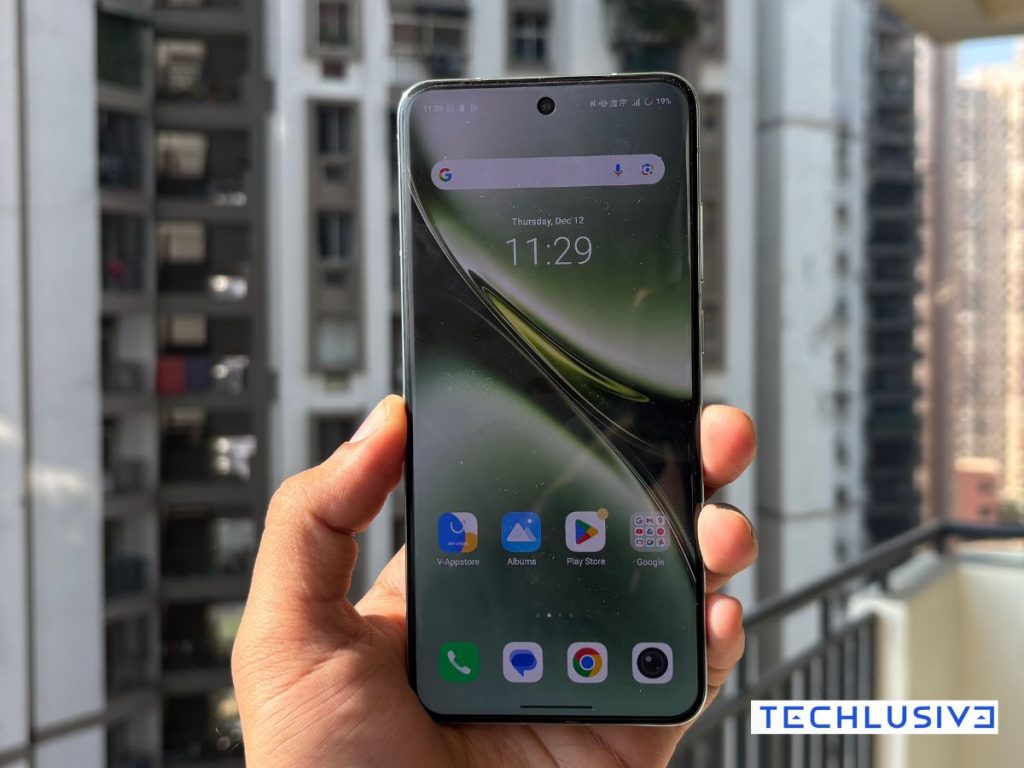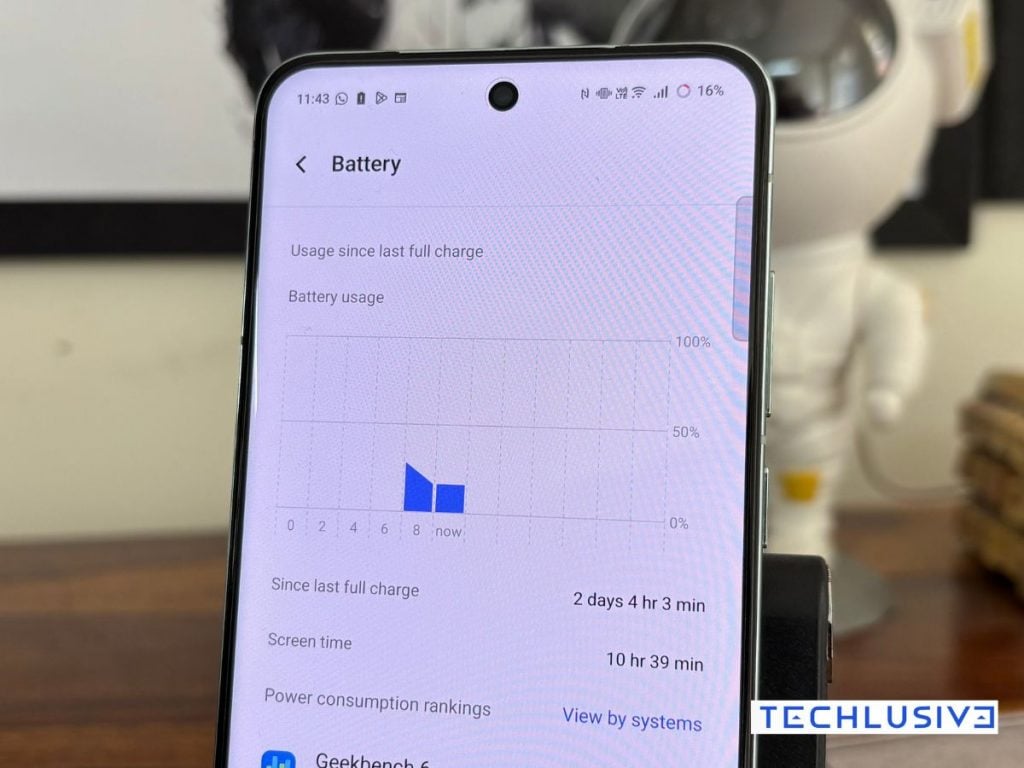Vivo’s X-series has had a great track record in our books, especially with the cameras and performance. Now we have the Vivo X200, which is promising better cameras with a lot of backend work on the UI and performance.
For context, Vivo X-series devices have made big leaps in camera performance with each generation, and the X200 has a lot of firepower from Zeiss to make it special. So here’s a quick specification rundown, following which we will get to the full review.
Vivo X200 specifications
| Display | 6.67-inch AMOLED 120hz refresh rate, FHD+ resolution |
| Cameras | 50MP wide + 50MP Telephoto + 50MP Ultrawide 32MP selfie camera |
| Processor | MediaTek Dimensity 9400 |
| RAM and storage | 12GB + 256GB 16GB + 512GB |
| Battery | 5800mAh 90-watt Flash charging |
| Charger | 90-watt Flash charger |
| Connectivity | USB-C, Bluetooth, WiFi, NFC |
| Dimensions and weight | 16.027 cm × 7.481 mm × 0.799 mm 197g (black), 202g (green) |
| Colours | Cosmos Black, Natural Green |
| Box contents | Phone, charger, data cable, SIM ejector tool, case |
| Price | ₹65,999 for base variant with 12GB RAM |
Vivo X200 design and build
A flatter design with a 4D curved display. I like the way Vivo has designed this phone. Compared to the last-gen X100, this feels lighter and more mature. This natural green colour looks good and reminds me of the OnePlus Open’s green colour.
It has a noticeably large camera bump with Zeiss branding in the centre, with the flash sitting at the top-right corner. You get the volume and power buttons on the phone’s right side. The Vivo X200 feels lighter than the X100, but it does not feel light by any means. It still has some heft to it, but that contributes to the premium feel, now that the weight distribution is better.
Vivo told us that this phone has revised internals, including a new motherboard bracket to give it this thinness and weight distribution. Coming back to the camera bump, you’ll see Vivo’s sunburst ring design at the sides, with a massive silver ring around the camera bump. I think the silver lining is to offer some protection to the camera module, but removing it could’ve made the bump slightly slimmer. Overall, this is a premium-looking phone with a neat design.
Vivo X200 cameras

Yes, it has good cameras, and you will like the results this camera delivers. Vivo has always put its best in the X-series cameras, which also shows here. You get triple 50MP cameras with dedicated software modes to improve the results.
The company has worked on the macro mode and added a new landscape photography mode to improve nature photography. You also get a dedicated street mode with a simplified control layout. However, we could still see some overcorrections in the portrait mode.

Even after 100x zoom, Vivo X200 often manages to recreate close-to-original details. However, you will see the phone brightening up portrait and close-up shots. But beautification algorithms have come a long way, and you can fine-tune the results to your liking.
Overall, this is a capable camera system and you will like the camera app’s interface, especially in the street mode.
Vivo X200 display and speakers

While this 6.67-inch display has the specifications of a regular good screen at this price, it feels premium. The Vivo X200 has a curved design with flat sides and the display compliments that. It is ever so slightly curved to give it the premium look of a curved screen, but when you use it, it almost feels as good as a flat screen.
So Vivo has the design right, but some things still require some work. For starters, the speakers aren’t good enough. Phone speakers are not meant to be superbly high-quality, but there are fairly good phone speakers in devices in this range. But the Vivo X200’s speaker is loud, but the detail loss is audible when you raise the volume.
You get an optical fingerprint sensor, which is fast, but still slower than the ultrasonic ones that we’ve seen on more recent phones. So if you’re okay using it at low volumes, or pairing a set of earbuds for watching videos and listening to music, this is a good screen.
Vivo X200 user interface and performance
Vivo has added close to 4000 new elements to FunTouch OS to improve the phone’s software experience. However, it still feels far from its more polished competitors. While the UI is refined, some things will bother you when you start using this phone. I’m going to count 5 of them that made my list.
- Bloatware: The X200 has FunTouch OS, and FunTouch has bloatware. While the iManager is a useful app, most of the other stuff like the dialer and contacts take away functionality.
- The quick settings panel has no split view, and you can’t remove Jovi home from the top panel.
- The clear notifications (cross) button on the notification panel is too small. You’ll mistouch it multiple times before getting used to it.
- Icons feel out of place if you increase text size. But all apps feel slightly smaller if you keep it default.
- A couple of core features like Android theft detection are just missing.
That said, the OS also affects the overall performance and resource allocation. I recently tested the OPPO Find X8, which had the same specs as this device, but the game standby was unmatched. With the X200, despite all background permissions given, tasks refresh on their own after some time.
Strict RAM management will give you better battery backup and more resources on the app you’re currently using. But the X200 has 12GB RAM in the base variant, which should be more than enough to intelligently keep tasks suspended.
Vivo X200 battery and charging

Vivo has done some solid work on the battery here. The 5600mAh cell on the X200 is a semi-solid battery. It is the first time a phone is using this tech in India, and it has helped Vivo make this phone slimmer, and lighter, and have the necessary safety measures in place. You get a solid full day of backup at moderate use, and if you’re not playing games or binge-watching, then this phone can go more than a full day without charging. That’s where you’ll appreciate the aggressive RAM management.
There’s a 90-watt flash charger in the box, but I think Vivo has gone backwards this time. The Vivo X100 came with a 120-watt USB-C to C charger, but the X200 has a smaller 90-watt USB-A to C charger. You still get from 20% to 90% charge in roughly 30 minutes, but it is a downgrade from 120 to 90-watt, and from a USB-C to USB-A to C. Plus there’s still no wireless or reverse wireless charging, which is another miss at this price.
Vivo X200 review: Verdict
This is genuinely one of the most confusing phones I’ve tested this year. It has great cameras, but the AI corrections can be overwhelming for some users. The build and display feel premium, but the speakers and fingerprint sensor are not good enough for the price.
Then you have the powerful specifications, but FunTouch OS still has some niggles that need work. On the other hand, Vivo has put a ton of work into making this phone look and feel the way it looks and feels, which is great. So hardware-wise, the Vivo X200 has the makings of a flagship but some more work on the software front will make it a truly recommendable phone.
Get latest Tech and Auto news from Techlusive on our WhatsApp Channel, Facebook, X (Twitter), Instagram and YouTube.




















 English (US) ·
English (US) ·